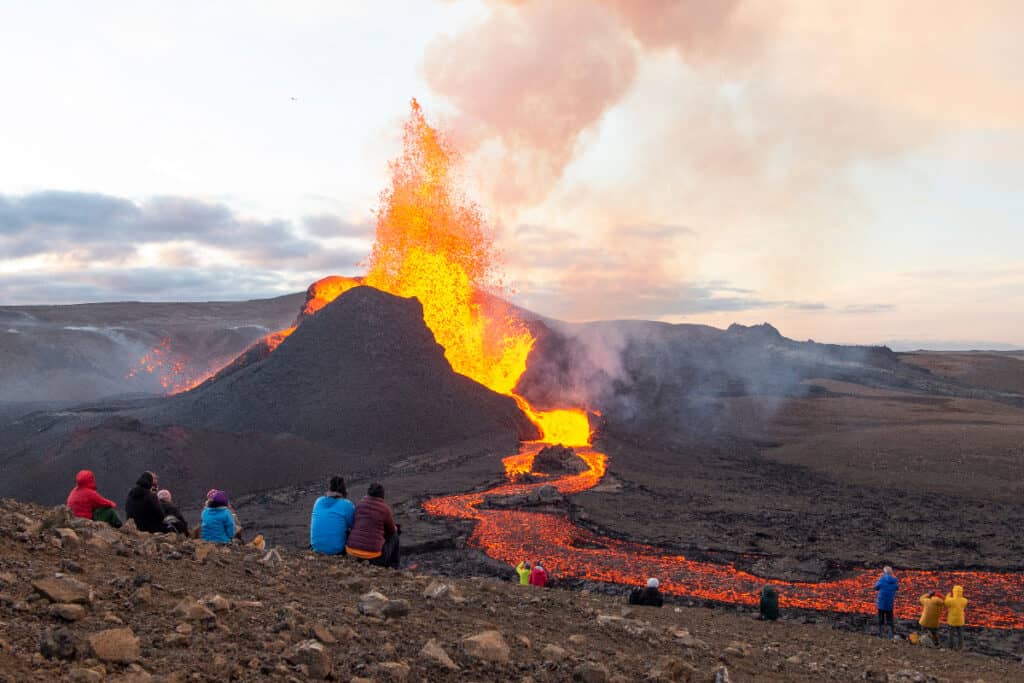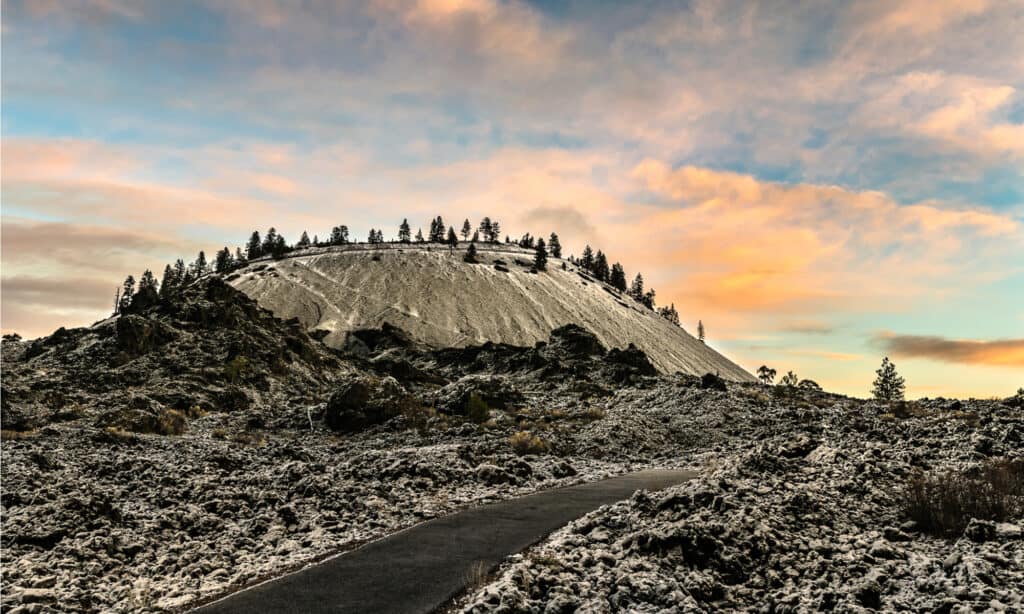Volcano eruptions are lethal agitations caused by high temperatures emanating from the earth’s crust. These eruptions come off the mouth of volcanoes in the form of lava, along with dangerous gases and sharp particles of volcanic glass and rock. Volcano eruptions bring adverse threats to humans; affecting the weather conditions, agriculture, food security, and even cities.
What is the Adverse Effect of Volcano Eruption on Weather?

With a temperature between 1292° F to 2372° F, magma sadly threatens the entire climate and living creatures.
©fboudrias/Shutterstock.com
It is no news that volcanic eruptions often come off with an entourage of volcanic gases, lava, and particles of hot rocks. With a temperature between 1292° F to 2372° F, magma sadly threatens the entire climate and living creatures.
Fumaroles, which are openings in the earth’s surface, facilitate the quick release of gases like carbon dioxide(CO2) and hydrogen sulfide(H2S), causing the stratosphere to be saturated with these gases and allowing chlorine to be chemically converted into other reactive forms that can destroy the ozone.
In cases of explosive volcanic eruptions, the danger of experiencing pyroclastic flow is always certain. It has the potential of inducing an explosive spray of hot rocks and ashfall, moving like an avalanche and plundering whatever it finds on its path.
What is the Adverse Effect of Volcano Eruption on Agriculture?
Unfortunately, ashfall from volcano eruptions can have significant impacts on crops. The physical impacts prevent plants from experiencing the natural process of photosynthesis and transpiration, leading to plant failure. Moreover, rainfall interacting with volcanic gas may produce acids that fall as acid rain on these crops. When acid rain falls on plants, it affects the plant surface, topsoil, subsoil, and even the parent rock. Ash deposited on the ground can also alter soil chemistry, altering the acidity, nutrient content, and water content.
What is the Adverse Effect of Volcano Eruption on Cities?

Eruptions can cause widespread loss of life, landslides, rockfalls, and fire outbreaks.
©Thorir Ingvarsson/Shutterstock.com
When there is a major eruption in a city of a developing country, the severity of the eruption can cause widespread loss of life and regional disruption with little to no response squad ready to evacuate victims. However, an effective response might tone down the number of casualties in a developed nation. One thing is certain, wherever an eruption occurs, the economic impact is always felt globally.
Other consequences of a volcano eruption in cities include volcano-induced tsunamis, landslides, rockfalls, and fire outbreaks.
How Can One Tell When a Volcano is About to Erupt?
In truth, nobody can tell the exact time an eruption will happen. However, it is always safe to evacuate areas around their vomit circumference. Since explosive eruptions don’t just happen out of the blue, they begin to give off warning signals (bulging of the volcano, noticeable steaming, small changes in heat flow, swelling of the volcano, sequence of earthquakes, and prolonged emission of gases). These warning signals are indicators for researchers and scientists who closely monitor the signs to determine if an eruption is imminent.
Positive Effect of Volcano Eruption
Despite having several negative outcomes, volcanic eruptions may also have a positive side to the coin. Interestingly, some of the erupted dust particles and gases that infiltrate the stratosphere reduce the intensity of solar rays that hit the earth’s surface and consequently affect the planet negatively. This cooling effect varies between months and years, courtesy of the characteristics of the eruption.
What are Volcanic Dust?

Volcanic dust are capable of temporarily shading sun rays and cooling.
©Jason Cornell/Shutterstock.com
When an explosive volcano eruption occurs, volcanic dust is usually released into the atmosphere through the vent. Volcanic dust can interchangeably be referred to as volcanic ash and are capable of temporarily shading sun rays and cooling. This cloud is formed in the troposphere, and it does the job of temporarily providing a shield from sun rays.
Relationship between Volcano, Sulfur, and the Greenhouse
Part of the positive effect of a volcanic eruption is the release of sulfur dioxide into the atmosphere. In this case, the sulfur dioxide easily fuses with water to form sulphuric aerosols. These aerosols are more effective in shielding the planet and reducing global warming.
When released from the fumarole, sulfur dioxide moves into the troposphere and combines with water to form sulphuric aerosols. The aerosols can stay in the troposphere and stratosphere for a long period, being moved around by wind and continuously influencing significant cooling worldwide. The droplets grow large enough to fall back onto the earth at some point.
It is worth noting that volcanic eruptions have contributed greatly to the release of gases like water vapor and carbon dioxide, with the excessive release of the latter causing a significant increase in global warming.
How Do Volcanoes Form?
Tectonic plates, often referred to as lithospheric plates, play a vital role in forming volcanoes. They are generally large slabs of irregular rocks consisting of oceanic and continental lithosphere. Over time, these plates experience movements where lighter lithospheric plates gradually move under a heavier plate. This means that the former will sink into the mantle, causing water to be released from the sinking rock due to the rise in temperature and pressure from the earth’s crust. This lost water relatively reduces the melting point of the rock, allowing it to disintegrate and form molten magma gradually, which repeatedly continues with the molten magma rising and eventually bursting out of the volcano.
How to Protect Yourself During Volcanic Eruption
- It is in the best interest of residents to adhere to strict warnings from the authorities.
- If you are within the confines of a house, close all doors, windows, and fireplace to protect yourself against mudflows and ash falls.
- If you are outside, seek the nearest shelter as soon as possible.
- Protect your eyes with goggles during ash falls.
- Move away from an environment saturated with volcanic gases.
- During mudflows, move up any visible slope as fast as possible.
- Do not drive during ash falls.
- Protect yourself with a disposable particulate respirator during ash falls.
The photo featured at the top of this post is © Cavan-Images/Shutterstock.com
Thank you for reading! Have some feedback for us? Contact the AZ Animals editorial team.






